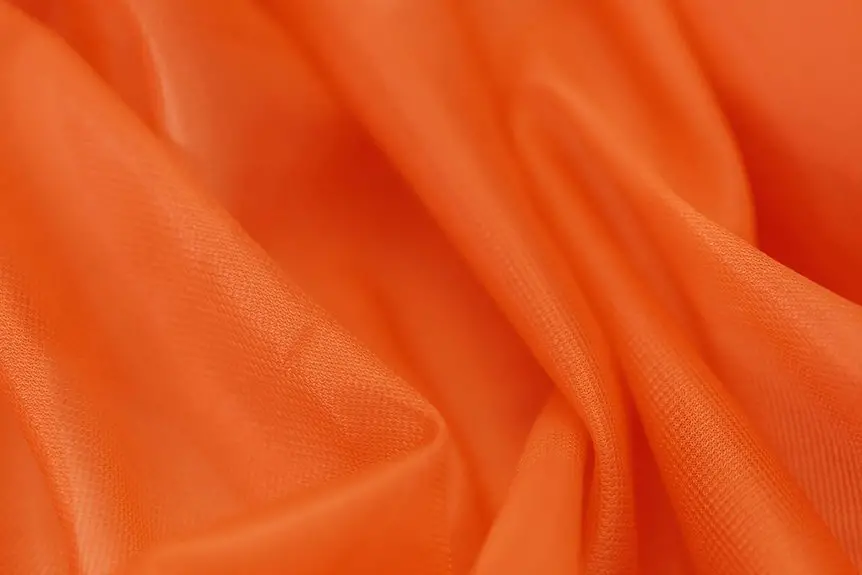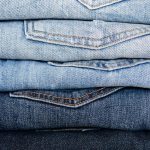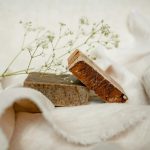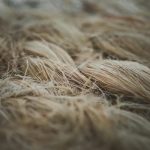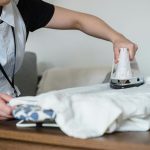Airlaid nonwoven fabric combines natural cellulose fibers from wood pulp with bonding agents to create a soft, absorbent, and strong material. It’s made by dispersing fibers in the air to form a web, then bonding them without weaving or knitting. You’ll find it lightweight, breathable, and durable, used in everything from hygiene products to food packaging. If you want to understand how it’s made and why it’s eco-friendly, there’s plenty more to explore.
Table of Contents
Key Takeaways
- Airlaid nonwoven fabric is made by dispersing cellulose fibers in air and bonding them without weaving or knitting.
- It combines wood pulp fibers with a bonding agent to create a soft, fluffy, and absorbent material.
- The fabric offers high liquid retention, breathability, and strength while remaining lightweight and durable.
- Manufacturing involves fiber preparation, airlaying, bonding, and finishing to form a uniform, strong web.
- It is widely used in hygiene products, medical supplies, food packaging, and household items due to its absorbency and softness.
Understanding the Composition of Airlaid Nonwoven Fabric
Airlaid nonwoven fabric combines cellulose fibers with a bonding agent to create a soft, absorbent material.
When you handle it, you’ll notice its fluffiness and strength, thanks to this unique blend. The cellulose fibers, often sourced from wood pulp, provide natural absorbency and biodegradability.
Meanwhile, the bonding agent holds these fibers together, ensuring the fabric maintains its structure without weaving or knitting. You won’t find traditional threads here; instead, the fibers interlock randomly, giving the fabric excellent bulk and softness.
This composition makes airlaid fabric ideal for products that need to absorb moisture efficiently, like hygiene items or wipes.
Understanding this mix helps you appreciate why airlaid fabric balances durability with comfort, standing out from other nonwoven materials.
The Manufacturing Process of Airlaid Nonwoven Material
To create the soft, absorbent material you’re familiar with, manufacturers follow a specialized process that blends fibers and bonding agents without weaving or knitting. First, natural or recycled fibers are chopped and fluffed. Next, these fibers are dispersed into an air stream, evenly spreading them onto a moving conveyor. Then, the web is bonded using binders or thermal methods to give it strength and integrity. Finally, the fabric is dried and rolled for shipment.
| Step | Action | Purpose |
|---|---|---|
| 1. Fiber Prep | Chopping and fluffing fibers | Prepare raw material |
| 2. Airlaying | Dispersing fibers in air | Form uniform web |
| 3. Bonding | Applying binders or heat | Give fabric strength |
| 4. Finishing | Drying and rolling | Prepare for distribution |
Key Properties and Benefits of Airlaid Nonwoven Fabrics
Softness and absorbency stand out as the key qualities you’ll notice in airlaid nonwoven fabrics. These materials feel gentle to the touch and soak up moisture quickly, making them ideal for various uses.
When you choose airlaid fabric, you benefit from:
- High liquid retention without dripping
- Breathable texture that keeps things fresh
- Strong yet lightweight structure for easy handling
- Eco-friendly options with biodegradable components
- Resistant to tearing, ensuring durability
These properties combine to offer you a fabric that’s both practical and comfortable.
Whether you’re handling delicate tasks or need reliable absorbency, airlaid nonwoven fabrics deliver consistent performance. You’ll appreciate how this material balances softness with strength, providing versatility without compromising on quality.
Common Applications Across Different Industries
With its unique blend of softness, strength, and absorbency, this fabric finds its way into a wide range of industries.
You’ll see airlaid nonwoven fabric commonly used in hygiene products like baby diapers, feminine care, and adult incontinence items because it manages moisture effectively while staying gentle on skin.
In the medical field, it’s a go-to for surgical drapes and wound dressings, offering reliable barrier protection and comfort.
If you’re in the food packaging industry, airlaid fabric helps keep products fresh by absorbing excess moisture.
It’s also popular in household wipes, tablecloths, and even in automotive interiors where durability and softness matter.
No matter your industry, this versatile fabric can enhance product performance and user experience.
Environmental Impact and Sustainability Considerations
Although airlaid nonwoven fabrics offer many benefits, their environmental impact deserves careful attention.
When you consider sustainability, you should look beyond convenience and focus on the materials and processes involved. Airlaid fabrics often use renewable fibers, but the energy consumption during manufacturing can vary.
You can make a difference by choosing suppliers committed to eco-friendly practices. Here are key factors to keep in mind:
- Use of renewable or recycled fibers
- Energy-efficient production methods
- Biodegradability of the final product
- Minimal use of harmful chemicals or additives
- Potential for recycling or composting after use
Frequently Asked Questions
How Does Airlaid Fabric Compare in Cost to Other Nonwoven Fabrics?
You’ll find airlaid fabric usually costs more than spunbond but less than meltblown nonwovens. Its higher absorbency and softness justify the price, especially if you need quality for hygiene or medical products.
Can Airlaid Fabrics Be Dyed or Printed On?
Yes, you can dye or print on airlaid fabrics, but keep in mind their porous and absorbent nature may require special inks or dyes to guarantee vibrant, lasting colors without compromising the fabric’s softness or strength.
What Are the Storage Requirements for Airlaid Nonwoven Materials?
You should store airlaid nonwoven materials in a cool, dry place away from direct sunlight and moisture. Keep them sealed to prevent contamination and maintain their integrity, ensuring they stay clean and ready for use.
Are Airlaid Fabrics Hypoallergenic?
You might picture a gentle cloud—airlaid fabrics are usually hypoallergenic because they contain minimal chemicals and allergens. So, you can trust them for sensitive skin, but always check specific product details to be sure.
How Long Does Airlaid Fabric Typically Last in Use?
You can expect airlaid fabric to last several months with regular use, depending on the application and care. Its durability suits disposable products but won’t match traditional textiles’ lifespan when exposed to heavy wear or moisture.
- Recycling Nonwoven Fabrics: Is It Possible? - July 11, 2025
- Recycling Nonwoven Fabrics: Is It Possible? - July 11, 2025
- Recycling Nonwoven Fabrics: Is It Possible? - July 11, 2025

